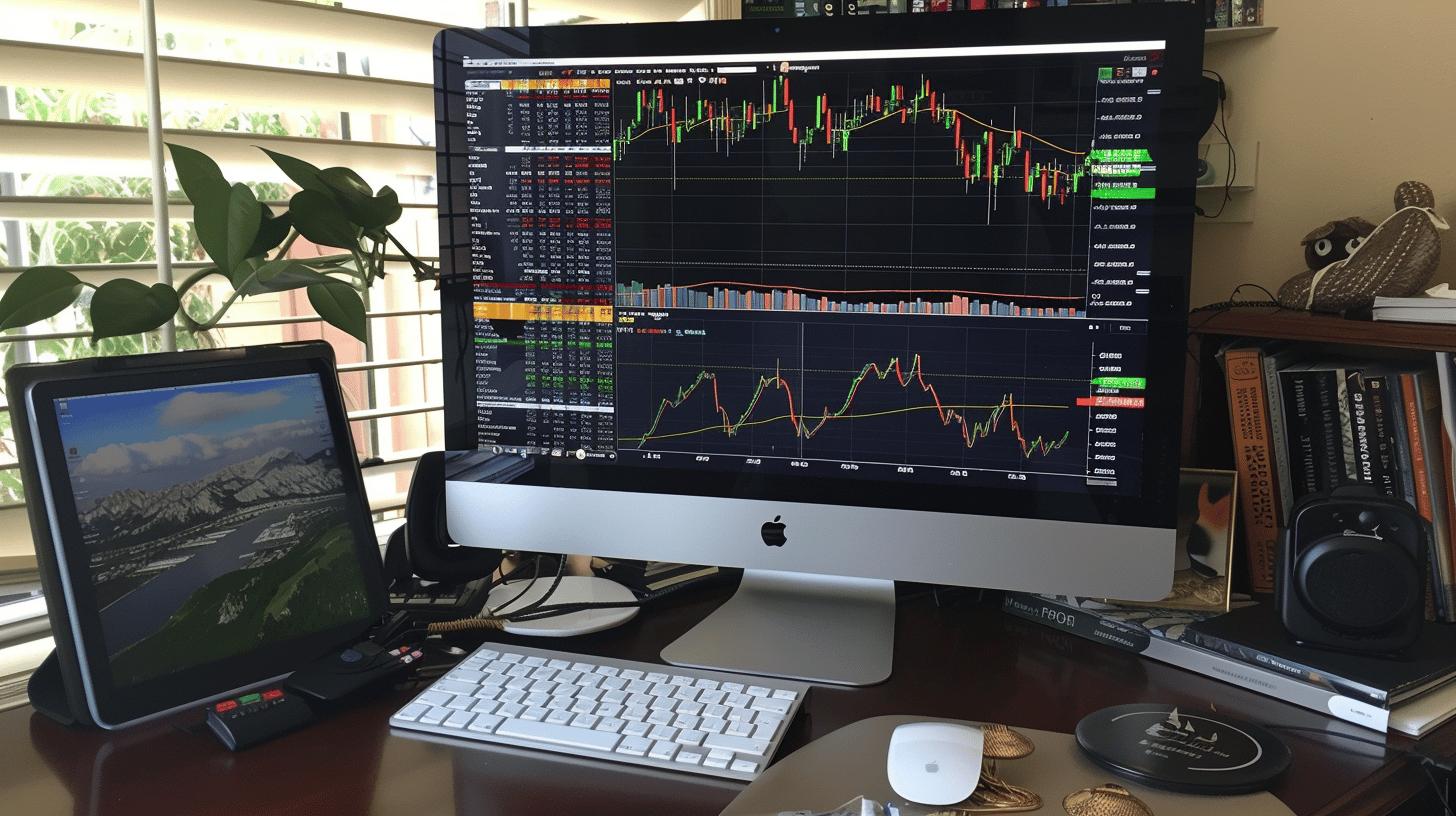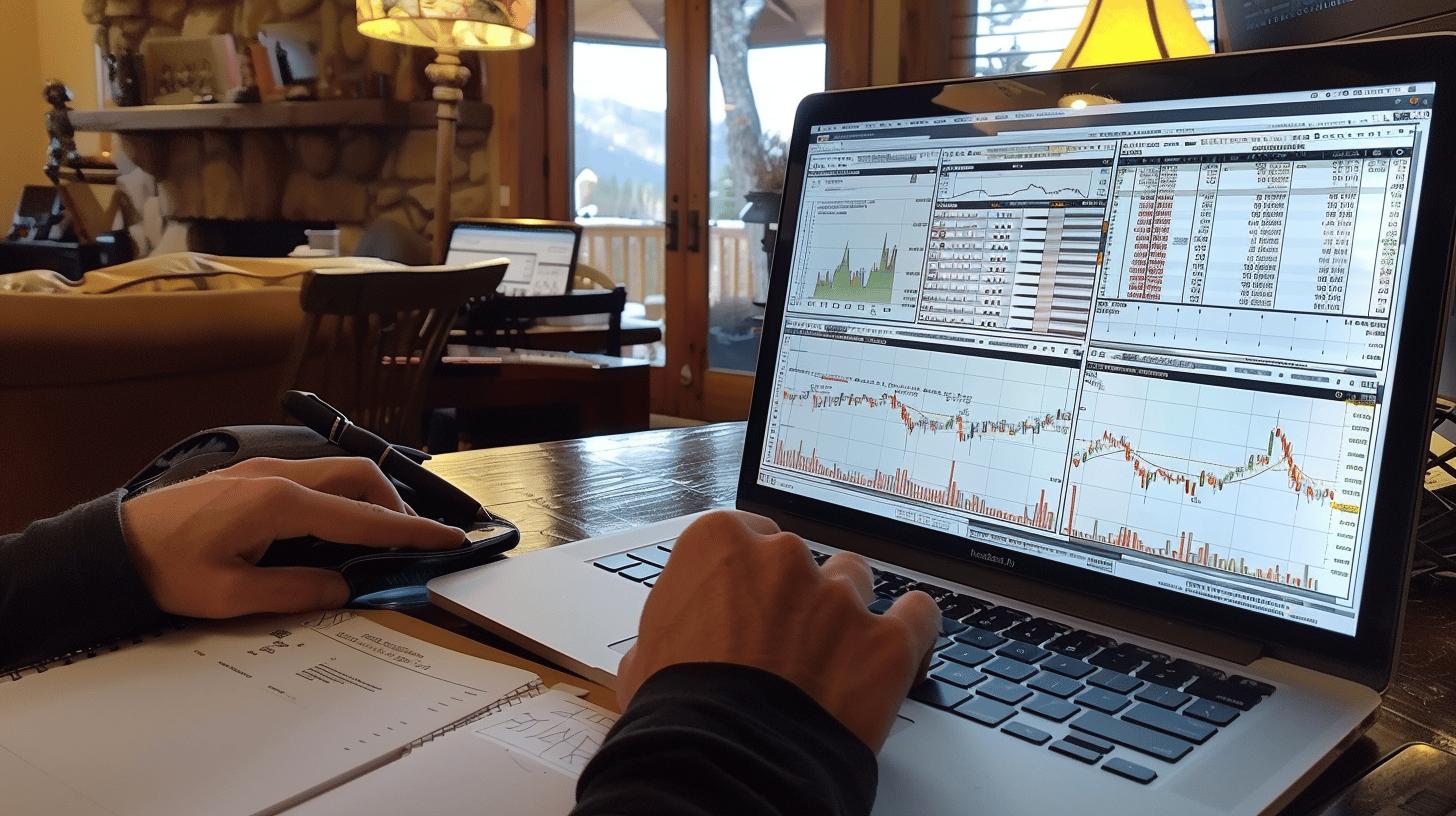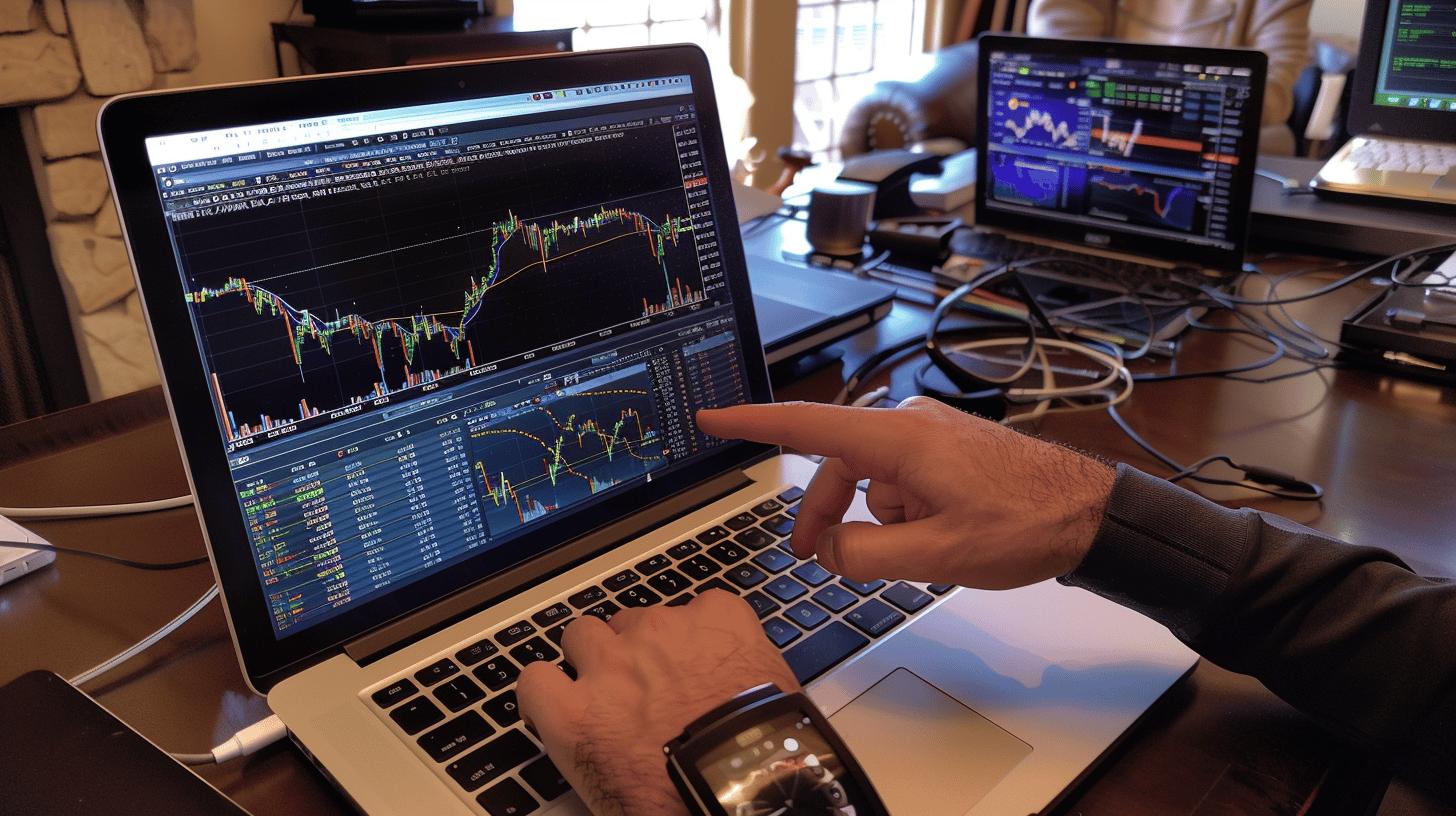Have you ever wondered how to decode the complex world of forex trading symbols? Understanding these symbols is fundamental to navigating the forex market effectively. In this article, we’ll delve into the basics of forex trading symbols, shedding light on their structure and significance. By the end, you'll gain the insights needed to interpret and utilize these symbols in your trading strategies, enhancing your proficiency and precision in the forex market.
Understanding Forex Trading Symbols
Forex trading symbols, commonly known as currency pairs, measure the value of one currency against another. These pairs consist of two currencies: the first is called the 'base' currency, and the second is the 'quote' currency. For example, in the EUR/USD pair, the Euro (EUR) is the base currency, and the US Dollar (USD) is the quote currency. The value of the pair indicates how much of the quote currency is needed to purchase one unit of the base currency.
The base currency is the reference element in a currency pair, and its value is always one. The quote currency fluctuates based on the exchange rate, reflecting the amount needed to buy one unit of the base currency. For instance, if the EUR/USD pair is trading at 1.20, it means that 1 Euro is equivalent to 1.20 US Dollars. This structure simplifies the process of understanding and comparing different currency values across the forex market.
Bid and ask prices play a crucial role in forex trading. The bid price is the amount a trader can sell the base currency for, while the ask price is the amount required to buy the base currency. Brokers provide these prices, and the difference between them is known as the spread. The spread is a key component of trading costs and can vary depending on market conditions and currency pair liquidity.
- Components of a forex trading symbol:
- Base currency
- Quote currency
- Bid price
- Ask price
- Broker's spread
Common Forex Trading Symbols and Their Meanings

The seven major forex pairs are the backbone of the forex market, accounting for the majority of trading volume. These pairs all include the US Dollar (USD) and are known for their high liquidity, tight spreads, and significant trading activity. The major pairs are: EUR/USD, USD/JPY, GBP/USD, USD/CHF, AUD/USD, USD/CAD, and NZD/USD. These symbols reflect the exchange rate between the base currency and the quote currency, providing essential insights for traders.
Forex indices are collections of related currency pairs grouped into single baskets, which allow traders to gain exposure to a specific region or economic zone. For example, the CMC USD Index includes multiple currency pairs involving the US Dollar, while the CMC GBP Index focuses on pairs involving the British Pound. These indices offer traders a broader view of currency movements and can be useful for hedging or diversifying their trading strategies.
| Forex Symbol | Base Currency | Quote Currency |
|---|---|---|
| EUR/USD | Euro | US Dollar |
| USD/JPY | US Dollar | Japanese Yen |
| GBP/USD | British Pound | US Dollar |
| USD/CHF | US Dollar | Swiss Franc |
| AUD/USD | Australian Dollar | US Dollar |
| USD/CAD | US Dollar | Canadian Dollar |
| NZD/USD | New Zealand Dollar | US Dollar |
– Examples of common forex trading symbols:
– EUR/USD (Euro/US Dollar)
– USD/JPY (US Dollar/Japanese Yen)
– GBP/USD (British Pound/US Dollar)
– USD/CHF (US Dollar/Swiss Franc)
– AUD/USD (Australian Dollar/US Dollar)
– USD/CAD (US Dollar/Canadian Dollar)
– NZD/USD (New Zealand Dollar/US Dollar)
Types of Forex Currency Pairs
Forex currency pairs are grouped into three main categories: major pairs, minor pairs, and exotic pairs. Understanding these categories is essential for effective trading strategies and risk management.
Major Currency Pairs
Major currency pairs involve the US Dollar (USD) and another major currency. These pairs are characterized by high liquidity, lower spreads, and significant trading volume. The high liquidity means that trades can be executed quickly, and the lower spreads result in reduced transaction costs. Examples of major currency pairs include:
- EUR/USD (Euro/US Dollar)
- USD/JPY (US Dollar/Japanese Yen)
- GBP/USD (British Pound/US Dollar)
These pairs are widely followed by traders due to their stability and predictability, making them ideal for both beginners and experienced traders.
Minor Currency Pairs
Minor currency pairs, also known as cross-currency pairs, do not include the US Dollar. Instead, they involve other major currencies. These pairs tend to have slightly higher spreads and lower liquidity compared to major pairs but still offer substantial trading opportunities. Examples of minor currency pairs include:
- EUR/GBP (Euro/British Pound)
- GBP/JPY (British Pound/Japanese Yen)
The absence of the US Dollar makes these pairs useful for traders looking to diversify their portfolios and reduce exposure to USD-related risks.
Exotic Currency Pairs
Exotic currency pairs consist of one major currency and one from an emerging or smaller economy. These pairs are known for their higher volatility and lower liquidity, which can lead to larger spreads and increased trading costs. However, they also offer opportunities for significant gains. Examples of exotic currency pairs include:
- USD/ZAR (US Dollar/South African Rand)
- USD/TRY (US Dollar/Turkish Lira)
Traders should approach exotic pairs with caution due to the heightened risk but can benefit from the potential for substantial returns when market conditions are favorable.
Practical Tips for Using Forex Trading Symbols

Understanding and correctly using forex trading symbols is crucial for any trader aiming to succeed in the forex market. These symbols represent currency pairs, which are essential for executing trades, analyzing market trends, and developing effective trading strategies. Knowing the structure and meaning behind each symbol allows traders to make informed decisions and minimize errors. Misinterpreting a symbol can lead to incorrect trades, resulting in potential losses.
The MT4 platform, widely used by forex traders, provides a comprehensive toolset for trading currency pairs. To trade forex pairs on MT4, select the appropriate symbols from the 'Market Watch' window. Once selected, you can analyze charts, set up trades, and monitor market movements. The platform's user-friendly interface and advanced features like automated trading, custom indicators, and real-time data feeds enhance the trading experience and efficiency.
Cross-referencing symbols with reliable sources is essential to ensure accuracy. Websites like investing.com provide up-to-date information on forex indices and their components, helping traders verify the symbols they are trading. This verification step helps prevent mistakes and ensures that trades are based on accurate data. Staying informed about market conditions, economic indicators, and geopolitical events also supports better trading decisions.
- Practical tips for using forex trading symbols:
- Understand the base and quote currencies.
- Use the MT4 platform to select and trade symbols.
- Cross-reference symbols with reliable sources.
- Stay informed about market conditions.
Factors Influencing Forex Trading Symbols
Forex trading symbols, representing currency pairs, are highly dynamic and subject to frequent fluctuations. These fluctuations are primarily driven by the relative strength of the currencies involved, with exchange rates updated in real-time by global banks. Traders need to understand the underlying factors that influence these symbols to make informed trading decisions and optimize their strategies effectively.
Exchange rates are influenced by a variety of factors, which can be broadly categorized into economic indicators, political stability, market sentiment, natural disasters, geopolitical events, trade balances, and speculation. These elements interact in complex ways, creating a constantly shifting landscape that traders must navigate. For instance, economic indicators such as interest rates, inflation, and employment data can significantly impact the perceived value of a currency. Similarly, political stability or instability can either bolster or undermine confidence in a currency, thereby affecting its exchange rate.
- Key factors influencing forex trading symbols:
- Economic indicators
- Political stability
- Market sentiment
- Natural disasters and geopolitical events
- Trade balances
- Speculation
Final Words
Forex trading symbols represent the value of one currency against another, serving as crucial components in forex trading. Understanding their structure, including base and quote currencies, bid and ask prices, and the broker's spread, is essential for navigating the forex market.
Major, minor, and exotic pairs each offer unique opportunities and challenges.
Practical tips and knowledge about influencing factors can enhance your ability to trade effectively.
Stay informed and utilize reliable tools like the MT4 platform for accurate forex trading symbol management. With this knowledge, you're better positioned to achieve success in forex trading.
FAQ
What is the forex symbol?
Forex symbols are abbreviations used to represent currency pairs. Each symbol reflects the value of one currency (the base) against another (the quote). For example, EUR/USD represents the Euro against the US Dollar.
What does the forex stand for?
Forex stands for "foreign exchange," referring to the global market where currencies are traded.
What symbols can I trade with in forex?
You can trade symbols for various currency pairs. Common examples include EUR/USD, USD/JPY, GBP/USD, USD/CHF, AUD/USD, USD/CAD, and NZD/USD.
How are forex symbols structured?
Forex symbols consist of a base and a quote currency. The first currency in the pair is the base, and the second is the quote. Prices include two rates: the bid (sell) and ask (buy) price.
What are the components of a forex trading symbol?
The components of a forex trading symbol include:
- Base currency
- Quote currency
- Bid price
- Ask price
- Broker's spread
What are the best symbols to trade in forex?
The best symbols to trade often include the major pairs like EUR/USD, USD/JPY, GBP/USD, and USD/CHF, known for their high liquidity and tighter spreads.
What is the gold symbol in forex?
In forex, the symbol for gold is XAU/USD, representing gold priced in US Dollars.
What are forex indices?
Forex indices are collections of related currency pairs grouped into single baskets, like the CMC USD Index and CMC GBP Index.
What determines the bid and ask prices in forex trading?
Bid and ask prices in forex trading are determined by the broker's quote, reflecting the rates at which you can sell (bid) and buy (ask) a currency pair.
What are the major currency pairs?
Major currency pairs involve the US Dollar and another significant currency. Examples include EUR/USD, USD/JPY, and GBP/USD, noted for high liquidity and lower spreads.
What are minor currency pairs?
Minor currency pairs do not involve the US Dollar but include other major currencies. Examples include EUR/GBP and GBP/JPY.
What are exotic currency pairs?
Exotic currency pairs consist of a major currency paired with one from an emerging market. Examples include USD/ZAR and USD/TRY, known for higher volatility and lower liquidity.
How can I use the MT4 platform to trade forex symbols?
To trade forex symbols on the MT4 platform, select the appropriate symbol from the list available. You can also use tools to track and manage your trades efficiently.
Why should I cross-reference forex symbols?
Cross-referencing forex symbols with reliable sources like investing.com ensures you trade the correct instruments and stay informed about the latest market conditions.
What factors influence forex trading symbols?
Factors influencing forex symbols include economic indicators, political stability, market sentiment, natural disasters, geopolitical events, trade balances, and speculation. Exchange rates are frequently updated by global banks based on these conditions.
